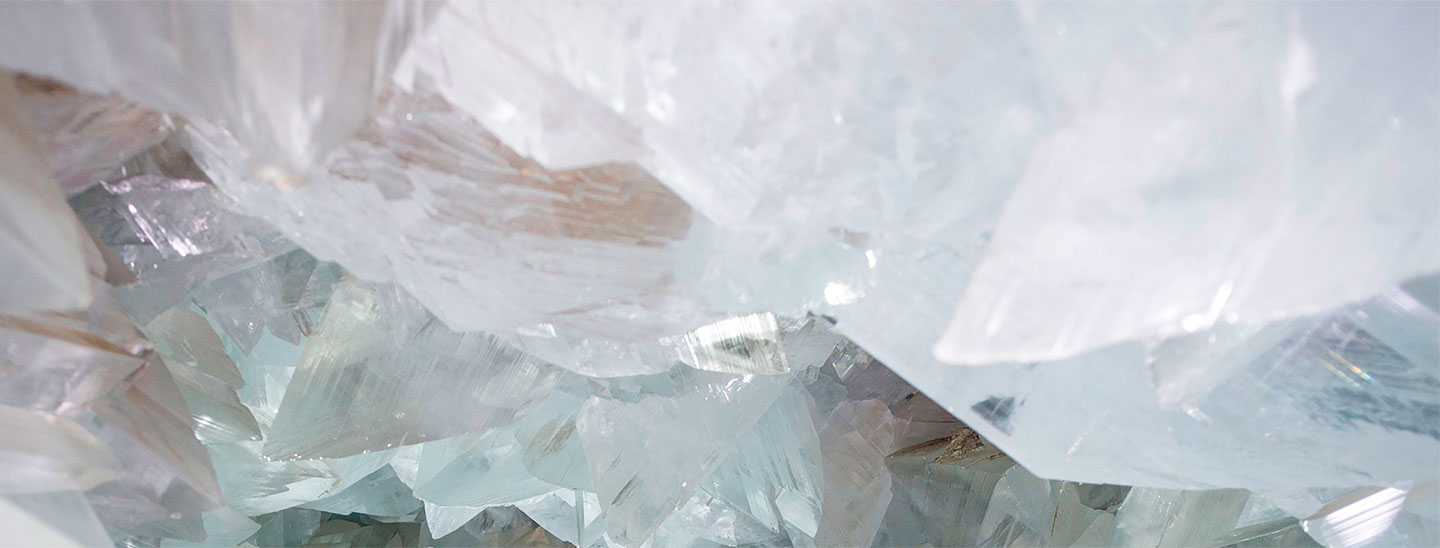There’s a giant rock in Spain filled with some of Earth’s largest natural crystals.
NGSS: Core Idea: LS4.C: Writing: 4

STANDARDS
NGSS: Core Idea: LS4.C: Writing: 4
Crystal Cavern
There’s a giant rock in Spain filled with some of Earth’s largest natural crystals.
From the outside, geodes look like regular round rocks. If you crack one open though, you’ll find its walls are lined with sparkling crystals. Many geodes are small enough to fit in your hand. But in southern Spain, near the city of Pulpí, you can find a geode that’s 26 feet long!
Known as the Pulpí Geode, it’s one of the largest crystalfilled rocks ever discovered. To see it, visitors must trek 164 feet underground, through tunnels of an abandoned mine. Finally, adventurers must squeeze through its 3-foot-wide opening.
The experience is otherworldly, says Javier Garcia Guinea. He’s a geologist at the National Museum of Natural Sciences in Madrid, Spain. He is studying the geode to find out more about it, including how it formed.
JORGE GUERRERO/AFP via Getty Images
CLOSER LOOK:
Geologist Milagros Carretero examines the geode from inside.
RARE ROCK
Scientists think the giant geode began forming millions of years ago. As rainwater seeped underground, it dissolved rock, forming hollow spaces. When water breaks down rock, it’s called erosion. The water then evaporated, or changed from a liquid to a gas. The water left behind a mineral called gypsum.
Over time, more water evaporated. Gypsum particles left behind attached to each other in orderly patterns. This formed larger and larger crystals. Today, some crystals are 7 feet long! Gypsum crystals that large are very rare, explains Garcia Guinea. The only others known are found in Mexico and Chile.
The Pulpí Geode was discovered in 1999 by mineral collector Efrén Cuesta as he explored the abandoned mine. Over the years, other collectors made the journey to the geode. That eroded the geode’s entrance, making it easier to pass through.
CARLOS BARBA/EPA-EFE/SHUTTERSTOCK
MINE ENTRANCE
To reach the geode, visitors must enter an abandoned mine.
A STUNNING SIGHT
The Pulpí Geode’s gypsum crystals are fragile. To keep them from falling apart, the air inside the geode has to stay cold and humid. Garcia Guinea is part of a group of scientists working to protect the crystals. This means limiting how many people can view the geode at a time.
Visitors are led down a spiral staircase through the mine. A pillar at the center of the stairs supports the rock. That’s important because the area is prone to earthquakes.
Unlike scientists, tourists aren’t allowed to fully enter the geode. But they can squeeze half their bodies through the opening to peek at the crystals. When Garcia Guinea first entered, he was anxious—but also excited. “My heart raced,” he says, “because I was seeing something incredible.”
Google Quiz
Click the Google Quiz button below to share an interactive version of the "Quick Quiz" with your class. Click Download PDF for the non-interactive skills sheet.
Download PDF